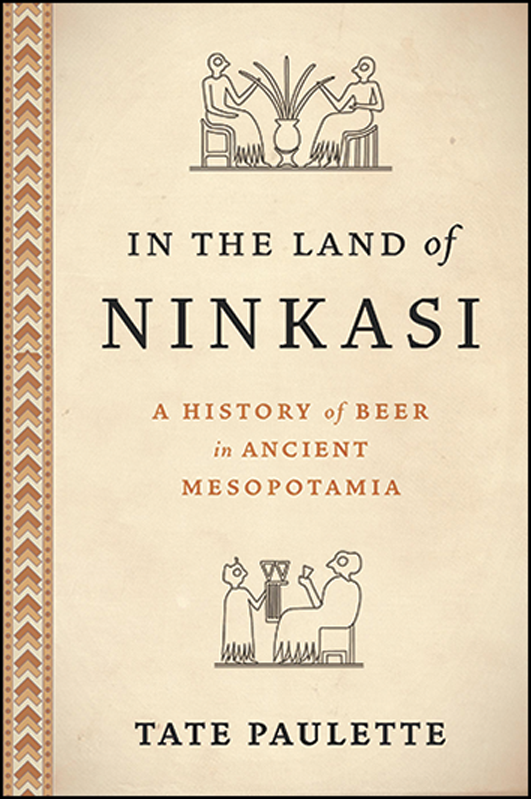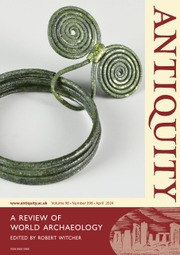
For an archaeologist studying ancient south-western Asia, discussing beer is the equivalent of how an expert on the ancient Greek or Roman world discusses wine. What would Athens or Rome have been without wine? Similarly, mentioning ancient Mesopotamia without pairing it with beer is impossible. Tate Paulette makes this point clearly in the book’s epigraph by citing a Sumerian proverb: ‘Not to know beer is not normal.’ When considering that ‘beer’ serves as an umbrella term for beverages resulting from the fermentation of processed cereals, the scholarly debate in the past decades on brewing as the driving force behind cereal domestication in the Near East is easily understood. The inebriating and mind-altering properties of fermented cereal-based brews, likely exploited for those specific purposes since the Early Neolithic period, are introduced in the first of the book’s seven chapters. Chapter 1 begins with re-creating a hypothetical scenario at the famous archaeological site of Göbekli Tepe, located in modern southern Türkiye, which immediately plunges the reader into a prehistoric communal work feast around 10 000 BC. In the land of Ninkasi is punctuated by this fictional storytelling, which unfolds through film-like scenes variously set in south-western Asia, from prehistoric settings to present-day archaeological excavations.
Despite the anecdotal nature of the narrative, the scientific grounds of the publication remain unaffected. What can be defined as beer in terms of the basic manufacturing process is outlined at the outset; the geographical and chronological framework of Mesopotamia, along with its archaeological and historical features, are explained in the second chapter in a straightforward and effective manner. Here, the author epitomises some of the major concerns underlying studies of the ancient Near East and how beer relates to them. Examining the emergence of the state, the rise of cities, the nature of the Mesopotamian economy, and the onset of inequality could offer fresh perspectives when viewed through the lens of beer in its economic, political and social value. Additionally, since the appearance of cuneiform writing in the late fourth millennium BC, the realm of beer features an already complex and structured domain. The pictographic system preceding the cuneiform script includes various signs referring to specific types of beer—depicted through different jar variations—present on administrative tablets, mainly recording transactions, deliveries, bills and receipts.
Drawing on written sources and archaeological evidence, which were occasionally paired with experimental brewing sessions also conducted by Paulette himself, Chapter 3 addresses the yet-unsolved matter of beer(s) ingredients. While malted cereal serves as the basic component of this beverage, the specifics of most of the other ingredients remain uncertain or unclear. The most debated ingredient is certainly bappir, the second, cereal-based, key element of Mesopotamian brewing. Its form, texture, appearance and overall aspect have been differently interpreted, ranging from a flavoured ‘beer-bread’ added to the mash (the mixture of malt and water) to a dried-out sourdough used as a fermentation starter in the brewing process. The author leans towards the latter hypothesis, relying on his analysis of the weight and volume values recorded for bappir in textual sources and comparing the resulting density with some present-day bakery products to gain insight into its consistency. A series of additional and even more elusive ingredients, such as the cereal-based titab and ninda kuma, or unmalted grains, appear to distinguish varieties of beer (golden, dark or sweet dark beer), and possibly also contain aromatics, honey or date syrup according to ‘recipes’ evolving over time. From an archaeological viewpoint, the choice to point out the change in the types of beers throughout centuries and millennia is a welcome one, as well as the existence of different emic ‘scales of measurement’ to define beer quality. Interestingly, in this regard, one criterion that seems to remain consistent over time is the concentration of malt in beers.
Beer-related containers, tools, equipment and production techniques are widely discussed in Chapter 4. The traditional entry point for exploring ancient Mesopotamian brewing is the ‘Hymn to Ninkasi’, brewer and goddess of beer, alongside the ‘Drinking song’ associated with it, both dating back to the first half of the second millennium BC. The hymn, in particular, is generally regarded as revealing the essential steps of the brewing process, from the making of bappir and malt to fermentation until the final pouring of beer, albeit allegorically rather than descriptively. Paulette diligently warns us against the ‘terminological’ and ‘minimalist’ traps behind a simple, step-by-step reconstruction based on this well-known literary text. Adopting terms from the modern brewing lexicon, as in the classical Miguel Civil’s 1964 translation of the hymn, has resulted in a more familiar (to us) view of the beer-production process, affecting the interpretation of both the ingredients involved and the brewing stages. Likewise, there is no reason to perceive Mesopotamian beer production as confined to a few basic steps (the ‘minimalist’ trap) or as identical across millennia. The same goes for tools and paraphernalia, especially ceramic vessels; it is a challenge to correlate their designations in textual records with archaeological evidence, and their exact function and intended use are not certain, with some possible exceptions.
Chapter 5 focuses on the public and private spaces of beer production and consumption—that is, breweries, taverns and dwellings. Up to now, only rare examples of areas specifically devoted to brewing have been identified, scattered between southern Iraq, northern Syria and central Anatolia.
Setting aside all the material specifics concerning beer brewing, Chapters 6 and 7 are dedicated to the drinking practices, the people involved and their experiences related to beer consumption. Through the addition of the iconographic evidence, the author reviews different ways of sipping beer from pottery but, above all, the book presents a social and economic portrait of the drinkers, as well as the context of consumption (funerary banquets, at work, at the tavern). To conclude the final chapter, there is a section devoted to the outcomes of beer drinking, particularly from a collective point of view on its role in shaping the Mesopotamian social world. Ultimately, the Epilogue accounts for the experimental approach to the ancient beer studies, reporting three major experiences of recreating Mesopotamian beer(s) since the late 1980s. Among them is the project that the author himself attended, which involved the preparation of the basic ingredients to brew two different qualities of beers (including bappir) in ceramic replicas of third-millennium BC vessels uncovered in central Iraq. Two beers were reproduced, cleverly named ‘Enkibru’ and ‘Gilgamash’, and the recipe of the latter is featured in the appendix so that readers could recreate it themselves.
Overall, the reviewed volume contains only two minor flaws worth noting. The first concerns the reiterated, hoped-for reliance on organic residue analysis to identify the over-rated oxalate or oxalic acid in pottery vessels as a biomarker for beer. This evidence alone cannot be taken as conclusive proof of beer use. The second concern involves the surprising lack of discussion regarding the other essential ingredient in beer making: water.
Beyond that, this book stands as an instructive, well-reasoned, well-written work representing the culmination of several years of painstakingly assembling dotted pieces of evidence on ancient Mesopotamian beer. It is a handy resource to consult for academics as a mine of specific bibliographic references and a science-based, engaging narrative for a broader audience, which includes helpful tools, such as a general timeline, guidance on reading ancient languages, figures and information boxes. However, viewing the volume merely as an exhaustive endpoint for Mesopotamian beer studies would be a mistake. The thought-provoking questions raised throughout the chapters open up paths towards new research avenues into the beer landscape. Paulette is a thorough and accomplished scholar who, by this book, has also proven to be an experienced novelist able to lead the reader through a captivating journey in ancient Mesopotamia, the ‘beer land’ of Ninkasi.


